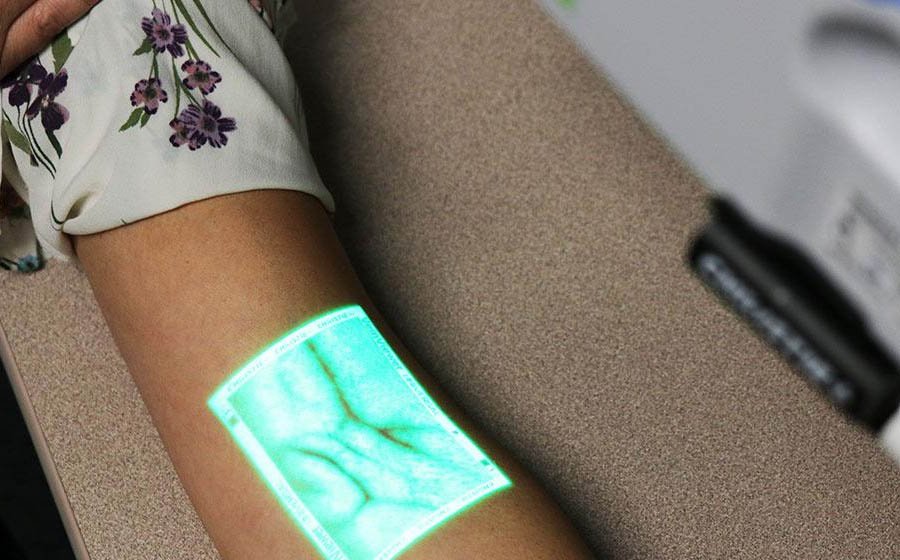When it comes to keeping a check on our health, we often forget about the most important indicator of our health – our veins. The network of veins transports oxygen-depleted blood from different parts of our body back to the heart.
This is why it is essential that we keep a close eye on our veins and make sure that they are functioning properly.
The best way to do this is to invest in a good quality vein finder. A vein finder is a medical device that uses infrared light to locate veins beneath the skin’s surface. It is an essential tool for both medical professionals and patients alike. It is especially useful for those who have a difficult time finding their veins.
Just like any other product, there are a plethora of options available in the market when it comes to vein finders. This can make choosing the right one for you a daunting task. But don’t worry, we are here to help! In this article, we will provide you with everything you need to know about vein finders so that you can make an informed decision when purchasing one.
How do Vein Finders work?
Vein finders use a process called near-infrared spectroscopy (NIRS) to locate veins beneath the skin’s surface. NIRS works by shining an infrared light onto the skin. The light then penetrates the skin and is scattered by different tissues in the body. Some of this scattered light is reflected back to the sensor where it is converted into an image.
The image produced by the sensor helps medical professionals locate veins so that they can insert needles or catheters into them more easily. It also helps patients who have a difficult time finding their veins avoid multiple needle sticks.
Types
There are two types of vein finders – handheld and desktop models.
- Handheld models are smaller and more portable than desktop models. They are battery-operated and can be used anywhere, making them ideal for use in ambulatory settings or home care settings.
- Desktop models are larger and less portable but they offer more features such as advanced imaging capabilities and longer battery life.
What Are the Benefits of Using a Vein Finder?
There are numerous benefits of using a vein finder, both for medical professionals and patients alike. Some of the main benefits include:
- Reduced number of needle sticks: Vein finders help reduce the number of needle sticks because they allow medical professionals to insert needles into veins more easily. This is especially beneficial for those who have a difficult time finding their veins.
- Reduced pain: A major benefit of vein finders is that they help reduce pain associated with needle sticks. This is because they allow medical professionals to insert needles into veins more accurately which minimizes tissue damage.
- Increased accuracy: Vein finders increase accuracy when compared to traditional methods such as palpation or visual inspection alone. This is because they provide real-time images that allow medical professionals to see exactly where the veins are located beneath the skin’s surface.
- Enhanced safety: Vein finders also help enhance safety because they reduce the need for multiple needle sticks which can lead to infection at needle insertion sites.
Choosing the right Vein Finder for you | what to Look for
Here are a few factors to consider while getting a vein finder for yourself.
Price
Vein finders range in price from around $500 to $5000. Obviously, you’ll want to choose a vein finder that fits within your budget—but don’t necessarily go for the cheapest option. In general, more expensive vein finders tend to be more accurate and easier to use than their cheaper counterparts.
Size
Vein finders come in both handheld and portable options. If you’ll only be using your vein finder at home, then a handheld model will probably suffice. But if you need a vein finder that you can take with you on the go, then you’ll want to opt for a portable model. Portable vein finders are typically small enough to fit in a purse or backpack, making them ideal for travel.
Ease of Use
Some vein finders are very easy to use—you simply press a button and wait for the LED light to show you where your veins are. Other vein finders require a bit more user setup, such as inserting batteries or connecting the device to an electrical outlet. When choosing a vein finder, be sure to pick one that’s easy enough for you (or whoever will be using it) to operate.
Battery Life and Warranty
Vein finders that come with long battery lives and comprehensive warranties are typically more expensive than those that don’t—but they’re also usually a better investment. If you can afford it, opt for a vein finder with a long battery life (10 hours or more) and a warranty that covers both defects and accidental damage.
Accuracy
Some vein finders are more accurate than others. If you have dark skin, then you’ll want to choose a vein finder that’s specifically designed for use on dark skin tones. Also, be sure to read online reviews before making your purchase; this will give you an idea of how accurate and reliable different models are.
Conclusion
There are a lot of factors to consider when choosing a vein finder—but by keeping these tips in mind, you can be sure to select the right model for your needs. From price and size to ease of use and accuracy, there’s a lot that goes into picking the perfect vein finder.
But with a little bit of research, you can find the perfect device for your needs—and have peace of mind knowing that your veins will be easy to locate when it’s time for your next blood draw or IV insertion. We hope this article was helpful in your search for the best vein finder for you! Thank you for reading.


